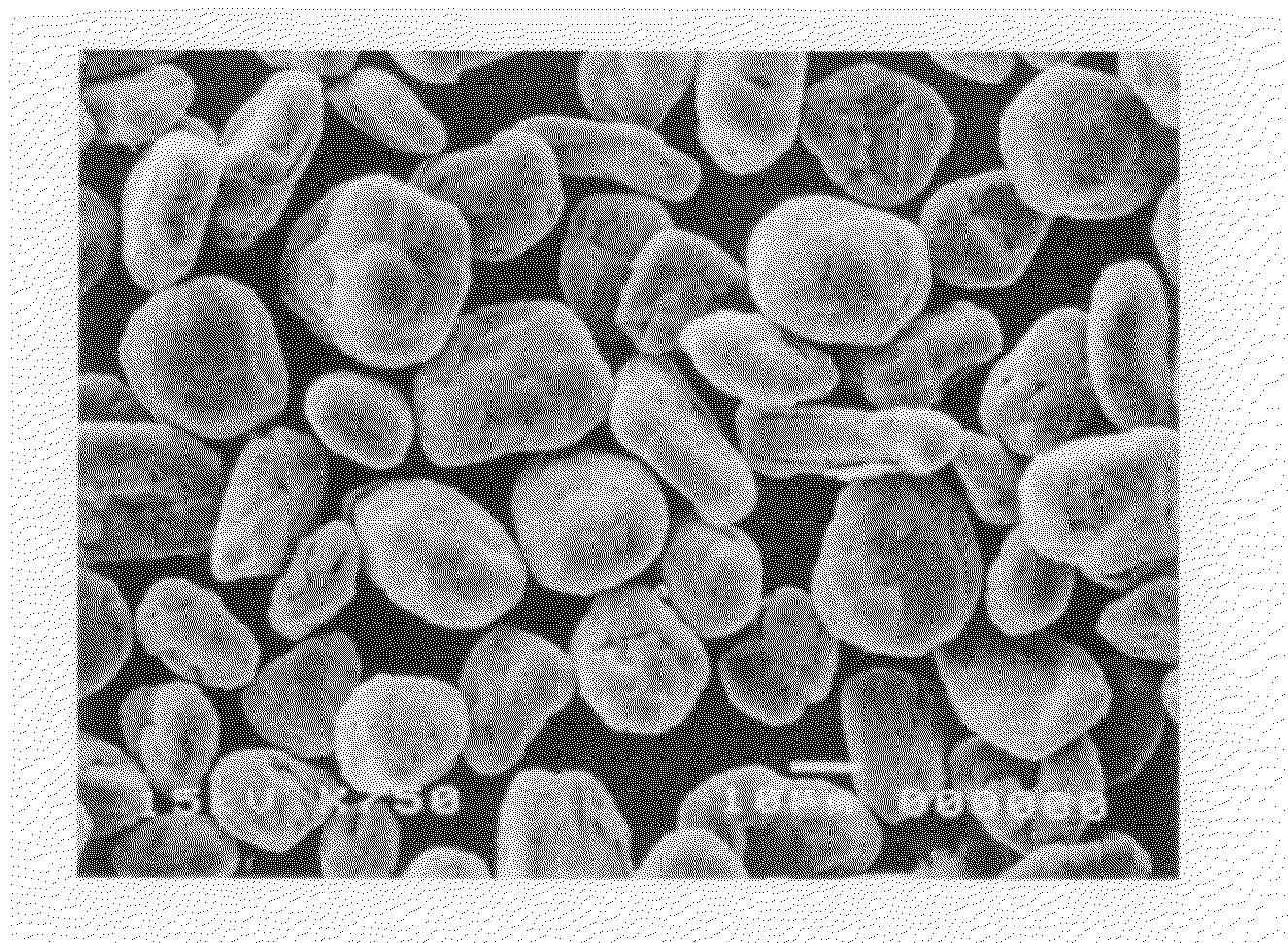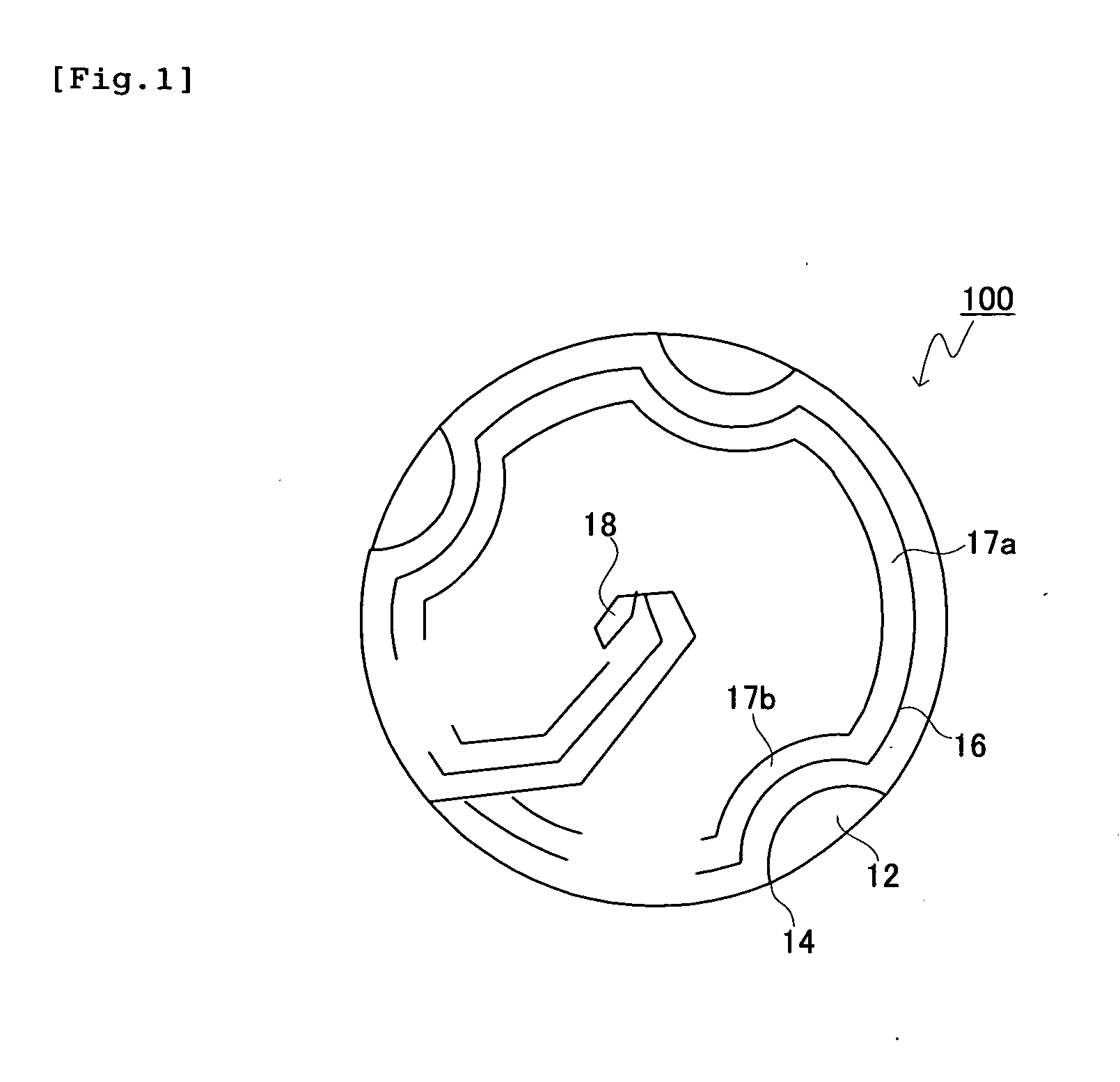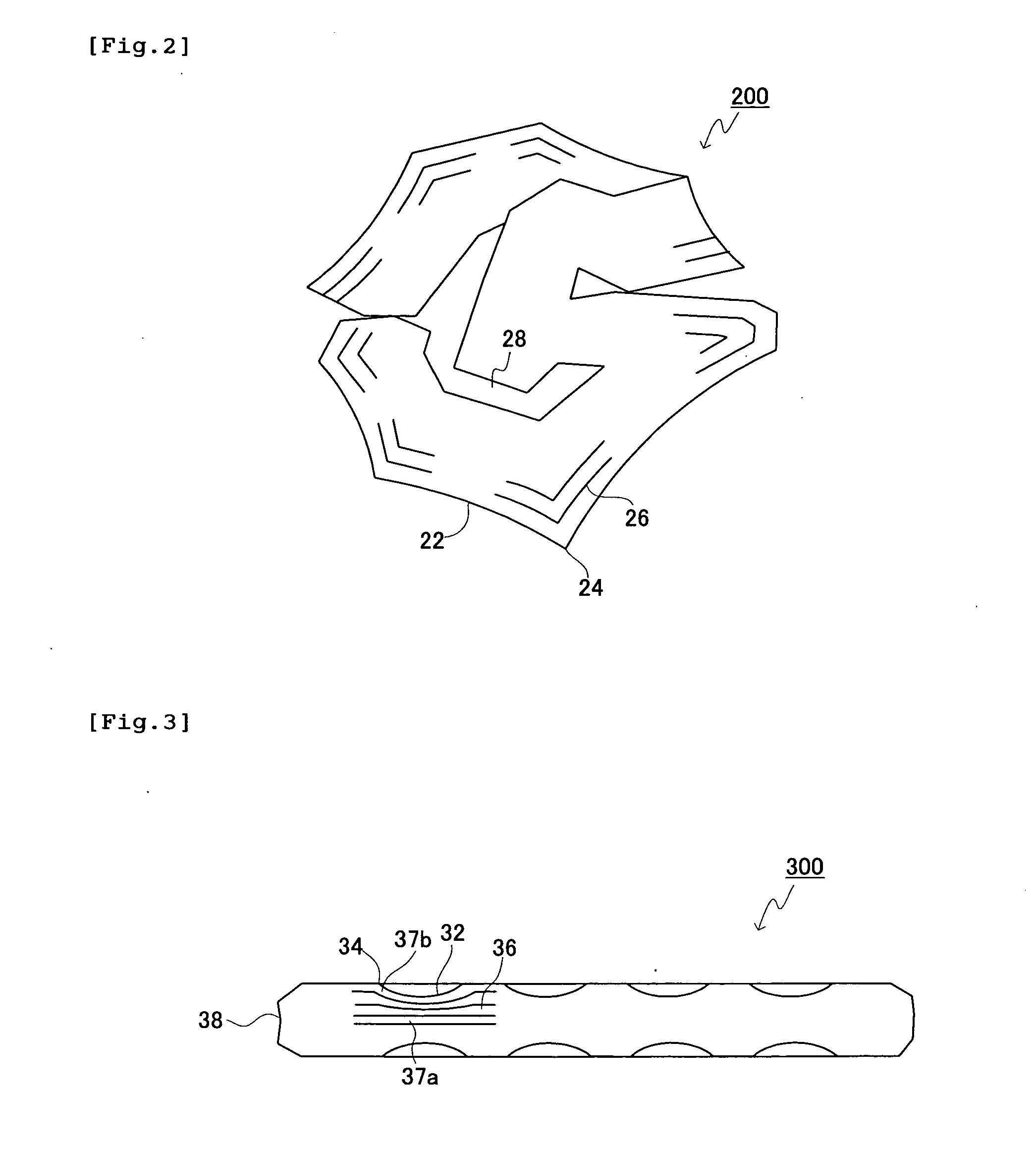Graphite Particle, Carbon-Graphite Composite Particle and Their Production Processes
a carbon-graphite composite particle and graphite technology, applied in the field of graphite particle and carbon-graphite composite particle, can solve the problems of difficult to allow lithium ion secondary battery to have an even higher capacity, rarely observed low electrode densities, negative electrodes, etc., to achieve the effect of high rate charge-discharge characteristic, excellent cycle life characteristic, and high capacity of lithium ion secondary battery
- Summary
- Abstract
- Description
- Claims
- Application Information
AI Technical Summary
Benefits of technology
Problems solved by technology
Method used
Image
Examples
example 1
[0155]100 g of copper particles (average grain size: 10 μm) were added to 100 g of scaly graphite (average length in planar direction: 28 μm, thickness: 5 μm), followed by mixing for 5 minutes using a desktop mixer. The mixture obtained was molded into a columnar molded article of 4 to 5 cm in diameter at a pressure of 50 MPa, using a desktop molding machine. The molded article was pulverized to an average particle diameter of 40 μm in a mortar. The pulverized material was immersed in a 5 mass % sulfuric acid solution at room temperature for 24 hours to dissolve and remove the copper. The liquid containing the copper and the graphite was filtered, followed by washing with water to recover the graphite. The recovered graphite was kept at 105° C. for 12 hours for drying. The obtained graphite particles (10 g) was kept in an electric furnace in floating nitrogen at 900° C. for 20 minutes and, during the period, 2 g of toluene was added to carry out a CVD treatment. The particles after ...
example 2
[0161]10 g of silica particles (average particle size: 6 μm) were added to 100 g of spherical graphite (average particle size: 28 μm), followed by mixing for 5 minutes using a desktop mixer. The mixture obtained was molded into a columnar molded article of 4 to 5 cm in diameter at a pressure of 50 MPa, using a desktop molding machine. The molded article was pulverized in a mortar and the pulverized material was immersed in a 46 mass % hydrofluoric acid solution at room temperature for 24 hours to dissolve and remove the silica. The liquid containing the silica and the graphite was filtered, followed by washing with water to recover the graphite. The recovered graphite was kept at 105° C. for 12 hours for drying. The obtained graphite particles (10 g) were kept in an electric furnace in floating nitrogen at 900° C. for 20 minutes and, during the period, 2 g of toluene was added to carry out a CVD treatment. The particles after the treatment were recovered, and were observed by a SEM ...
example 3
[0163]20 g of polyethylene particles (average particle size: 5 μm) were added to 100 g of spherical graphite (average particle size: 26 μm), followed by mixing for 5 minutes using a desktop mixer. The mixture obtained was molded into a columnar molded article of 4 to 5 cm in diameter at a pressure of 50 MPa, using a desktop molding machine. The molded article was pulverized in a mortar and the pulverized material was kept in an electric furnace in floating nitrogen at 900° C. for 1 hour, to remove the polyethylene. The obtained graphite particles (10 g) were kept in an electric furnace in floating nitrogen at 900° C. for 20 minutes and, during the period, 2 g of toluene was added to carry out a CVD treatment. The particles after the treatment were recovered, and were observed by a SEM and measured for tap density, average particle size, coverage amount of carbon, depth of recess, electrode density, electrode properties, etc. The diameter of recess was 5.7 μm and the depth of recess ...
PUM
| Property | Measurement | Unit |
|---|---|---|
| particle diameter | aaaaa | aaaaa |
| particle diameter | aaaaa | aaaaa |
| aspect ratio | aaaaa | aaaaa |
Abstract
Description
Claims
Application Information
 Login to View More
Login to View More - R&D
- Intellectual Property
- Life Sciences
- Materials
- Tech Scout
- Unparalleled Data Quality
- Higher Quality Content
- 60% Fewer Hallucinations
Browse by: Latest US Patents, China's latest patents, Technical Efficacy Thesaurus, Application Domain, Technology Topic, Popular Technical Reports.
© 2025 PatSnap. All rights reserved.Legal|Privacy policy|Modern Slavery Act Transparency Statement|Sitemap|About US| Contact US: help@patsnap.com



